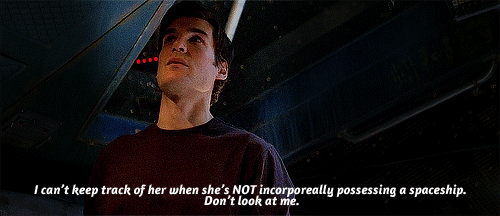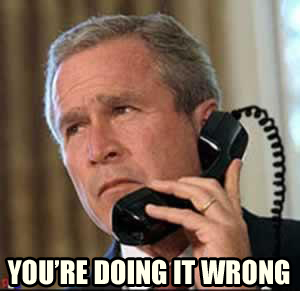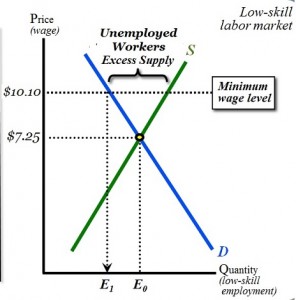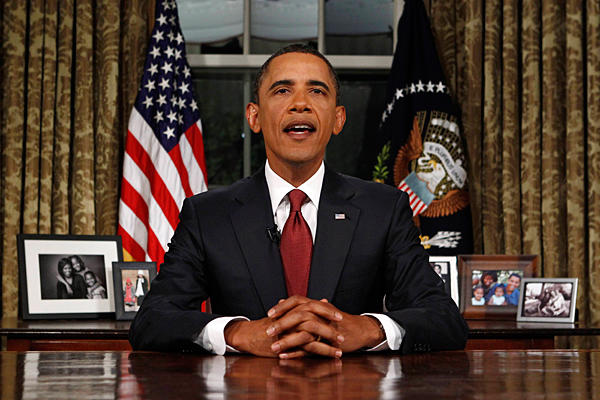As any Browncoat knows, you can’t stop the signal. You can, however, try to hijack it. Before the end of the first episode of Agents of S.H.I.E.L.D., I realized that that was exactly what was going on. I’m definitely not the first person to notice the strong parallels between Agents and Firefly. This excellent piece at ScreenRant dives right into the similarities… and why they don’t work. I largely agree with everything Andrew Dyce says in it, but I want to hone in on just the characters themselves, rather than also talking about plot, setting, and theme.
The ensemble cast (9 stars!) was the heart and soul of Firefly, but it was also the show’s Achilles’ heel, because having a lot of characters makes it harder for the audience to invest in the characters. This is partially because each individual character gets less time-per-episode, but there’s more to it than that.
In a show like Firefly, the audience gets to know the characters through their interactions with each other. To really know the group, we have to know how every member of that group relates to every single other member. Which means that it’s not characters that we have to worry about, it’s relationships. And the number of relationships in a group grows much faster than the number of individuals in the group.
This is a basic finding from network theory, but we can skip the theory and go straight to the pictures. In this illustration, taken from Wikipedia, imagine that every dot is a character, and every line connecting two dots is a relationship.

Small groups have very few relationships. You have to get up to three people in a group before you have three relationships to keep track of. But from that point on, the number of relationships grows much faster than the number of people being added to the group. Agents has six characters, so there are 15 relationships to keep track of. Firefly, on the other hand, had nine characters, which means there are 36 relationships to keep track of. This means that the cast of Firefly is more than twice as hard to get to know than the cast of Agents.
This isn’t just some random mathematical excursion, either. Social dynamics are a fundamental part of what makes us human. Some evolutionary biologists believe that one of the defining characteristics of the human brain is the ability to keep track of larger social groups than other primates. This is called the social brain hypothesis, and it was first promoted by Robin Dunbar. He argued that humans can only track a finite number of total, real-life relationships (most modern estimates say about 150), and this number became known as Dunbar’s number. In the real world, Dunbar’s number meant that our ancestors could congregate in much larger groups than chimpanzees, which allowed them to specialize and survive and (according to the hypothesis) could have created a feedback loop of increasing intelligence that led to modern humanity. The point is that we’re social animals, and there’s no reason to think that this doesn’t also apply to art.
This means that narrative with a lot of characters has the potential to be particularly engaging for us, but that it’s also harder to pull off. The story has to be good enough to keep people engaged long enough to have a chance to learn the relationships, and it also has to actually depict all the important relationships.
This isn’t a comprehensive theory of narrative, or anything. There’s a lot more to the story. Harry Potter is an incredibly engrossing narrative, and it only has 3 core relationships (between Harry, Ron, and Hermione) but a lot of the depth there comes from how those relationships change over time. (It’s partially a coming-of-age story, after all.) Game of Thrones has literally dozens and dozens of important characters, and there’s no way the books (let alone show) could hope to describe how every single person relates to every single other person, but that’s fine. The characters in Game of Throne are divided into factions and separated by geography, so it makes sense to have a very incomplete graph: not all the dots are going to have lines between them. But Firefly is a show about 9 people who all live together, and in that context we’re going to want to know how everyone relates to everyone else. Similarly, Agents has 6 people all living together, and so we can do a sort of apples-to-apples comparison between those two shows, even if we can’t generalize the analysis to every other book, movie, or TV show in existence.
So the point is that Firefly had a lot of relationships, and if you watch the shows in order that’s awesome because the story is good enough to keep you hooked, and then the episodes flesh out all the relationships. Which is great, right up until Fox decides to show the episodes out of order and to not even bother airing the premier.
Now, the lesson we Browncoats took from this is simple: air the episodes in the order they were written! TV execs probably saw things differently, however. Rather than fuss with shows that are highly sensitive to viewing-order, you’d want to try and re-engineer the show to be less sensitive. With or without my fancy network diagrams, it’s not really rocket science to realize that the simplest way to do that is to have fewer characters.
Which brings us to Agents as Firefly Lite: they basically took the exact same characters and downsized them from nine to just five[ref]Yes, just five. You’ll see.[/ref] Here’s how they did it:
Mal vs. Agent Coulson

This one is pretty obvious: older, white, father figure who was mysteriously and powerfully changed by some violent, traumatic event in his past. He loves his crew, but maintains a degree of emotional distance and detachment, attributes that serve him well as the unquestioned and unrivaled leader.
Zoe vs. The Cavalry

Next up we have the captain’s right-hand woman. She is staunchly loyal to the captain and they have a military history together, but there is absolutely no spark of romance whatsoever. Competent and resolute, she is the consummate professional fighter, but deep down she also bears the scars of loss and injury.
Kaylee vs. Fitz & Simmons

This is the most likeable and relatable character in the crew. We have a scientifically brilliant character who’s skills are without parallel and who has the technical know-how to save the crew on more than one occasion, but also a person who is in no way suited for combat and tends to wilt under threat of violence.
And yes, I am treating Fitz and Simmons as one character. This is because the thing that matters the most for this analysis is the relationship between characters, and the sibling relationship is so well-known that it doesn’t need to be explored or explained.
Jayne vs. Agent Ward

Here we have the muscle of the team. With nothing like the professional technique of the leader’s right-hand woman, the muscle is more an avatar of brute aggression and male assertiveness. Sexually avaricious, self-centered and emotionally stunted, the muscle can be relied on to rescue the team when needed, but usually grudgingly.
River & Simon vs. Skye

Here we have the most recent edition to the crew. This character is viewed with suspicion and a little resentment by everyone else because they arrived late, brought an unknown past, display a troubled personality, and still have murky ties to a mysterious organization that could threaten the whole crew. On the other hand, the character is vulnerable and needs their help and also possess a rare and highly specialized skill. Technical wizardry is great, but it sort of comes with the territory. Your very own top-tier trauma surgeon / hacker? That’s not something that comes standard for a group like this.
You’ll also note that, once again, I’m treating siblings like a single character because from the standpoint of intra-group relationships, the sibling relationship is more of a surplus to be tapped than a vacuum waiting to be filled.
MIA: Book, Inara, and Wash
So let’s talk about the crew of the Firefly that didn’t make the cut: Book, Inara, and Wash. Without doubt, these three characters were the most peripheral. After all, entire episodes took place with literally no input from Book and Inara, and when Serenity opens neither one of them is even onboard the ship anymore. Wash, for his part, ends up gutted on the end of a giant Reaver harpoon-type-thing, so none of them are actually present for the entire show.
They also, at times, fill overlapping roles. Book serves as the conscience of the crew sometimes, but Whedon often preferred to have the religious character ironically rudderless. In those cases, or when the Shepherd was off-camera, either Wash or Inara could also step up to fill that role.
And yet, they also each brought their own, irreplaceable element to the story. Book and Inara served to really flesh out Mal’s character, which is important because otherwise his relationship with the rest of the crew was a little formal and strained. Inara, as the love interest, and Book, as the mentor, showed a vulnerable and relatable side of Mal that made him much, much more compelling and relatable as a character. Wash, filled a similar role for Zoe, adding unexpected depth to her otherwise stoic façade. More than that, however, he served as the source of fun and humor for the crew. Not for the audience, mind you, but for the actual crew. It was Wash, more than anyone else, who could diffuse tension and act as a sort of mediator for some of the other relationships.
In a lot of ways, it was these supporting characters who really made the chemistry happen. They could drop off camera for a scene or even an episode, but they were anything but dispensable. These weren’t the only characters that Agents tried to get away without, however. There’s one more.
Serenity vs. The Bus

Outwardly there’s nothing subtle about this comparison. Serenity is a big, flying ship that is home to the entire crew. The Bus is a big, flying ship that is home to the entire crew. They perform pretty much exactly the same function, they look sort of similar, and they even both feature prominent engines that can rotate for vertical take-off and landing.
Other than function, however, they couldn’t be more different. The name Serenity comes from the Battle of Serenity Valley, which was the pivotal event in the war the defined the entire ‘Verse. It’s a deeply personal name for Mal, but it means something to every single person on the ship. The Bus, on the other hand, is about as impersonal as it gets. The Bus gets you from Point A to Point B. You don’t spend a lot of time worrying about what your relationship is to it. It’s just a means to an end. Agent Coulson named one of his cars with a personal name, but not the plane they all live. It isn’t really a home, and therefore they don’t have that family dynamic.
There’s nothing impersonal about Serenity. Every character on board had his or her own unique relationship to the ship, which is why it makes sense to talk about her as a character. She represents Mal’s stubborn refusal to let go of the past even as he struggles to confront the future, a symbol of the tattered shreds of his idealism and hope. She’s like a giant, beloved children’s toy or safety blanket for Wash, and she’s a confidant and companion to Kaylee. She’s a refuge for Inara, a rare example of a relationship that gives to the Companion without asking for anything in return. She’s like a forest for the Shepherd, providing both the shelter of shade and the confusion of shadow. She’s a bunk for Jayne, but also so much more. On Serenity, Jayne gets his own bunk, and so she represents his fragile self-esteem and acceptance in a that hates him (the feeling is mutual). Even Jayne loves Serenity because everyone loves their mom. Simon might have the most tenuous relationship to Serenity, but his sister River loves the ship so much she becomes incorporeal and merges her identity with it!

Although she doesn’t often make a big deal of if, however, it might be Zoe who has the most invested in Serenity, even if we don’t see it until after the loss of her husband at her helm.
 Getting Agents off the Ground
Getting Agents off the Ground
Lots of folks have tried to call Agents something like Firefly 2.0, but it clearly doesn’t deserve that title. A 2.0 version is supposed to be a big step forward. It’s supposed to build on the lessons of the prior iteration and offer more and better. But Agents has struggled to find its own voice while living off of borrowed magic from Firefly, and it borrowed that magic poorly. It’s not a version 2.0. It’s much more like a lite version. It took the essential heart of Firefly–a band of misfits forged into a family—and then it tried to get away with a simplified, dumbed-down version. Fewer characters and simpler group dynamics might make the show easier to understand, but it also just means that there’s a lot less to love.
With the announcing of the semi-rebranding of Agents to Agents of S.H.I.E.L.D.: Uprising, the show clearly has aspirations of finally lumbering off the ground on its own right. Some folks are pretty excited about what this means. Others are more skeptical.
I certainly wish the show the best, and I hope it succeeds in finding its own identity. I sort of doubt it will, however. Trying to launch a stripped down version of an earlier success is the definition of playing it safe, and safety is hardly ever the path to greatness.



















